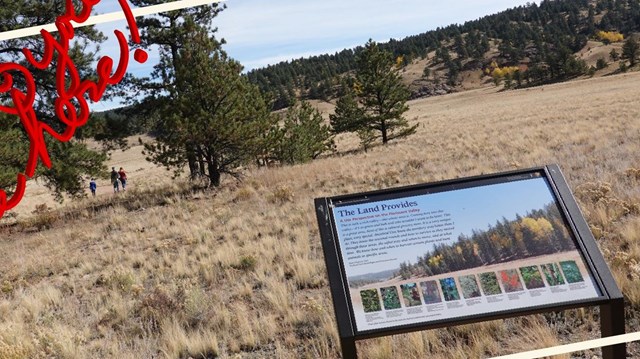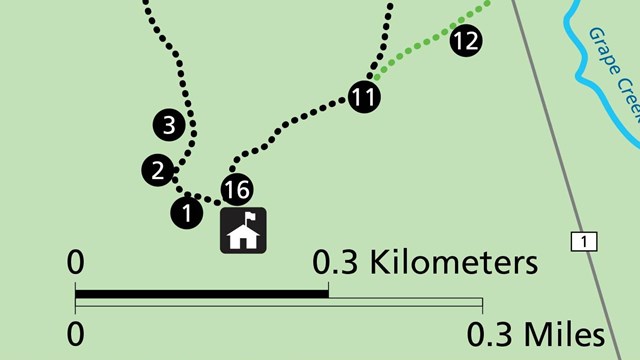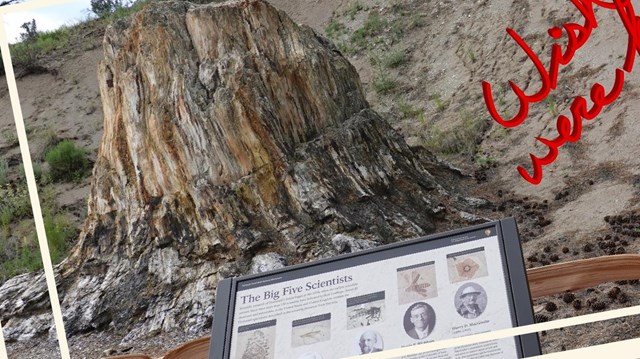
NPS This is one of the largest fossils in the park, a massive petrified redwood stump 12 feet in diameter. The Big Stump is all that remains of a redwood tree that may have been more than 230 feet (70 meters) tall and 500-1,000 years old when a lahar (volcanic mudflow) buried its base. You can see the lahar deposit directly behind the stump today. In the late 1800s, local residents excavated the Big Stump and it became an attraction, drawing tourists to the area. 
NPS Shelters now protect some of the remaining stumps from weathering, and laws strictly prohibit fossil collecting. A variety of conservation methods to stabilize and preserve the stumps have been proposed and tried over the years, and the National Park Service continues to work towards the best solution. 
NPS 
NPS 
NPS/SIP: Mariah Slovacek Some of the key layers of the Florissant Formation can be seen behind the Big Stump and further up the hill. They reveal the story of a 34-million-year-old stream valley that became flooded to form Lake Florissant below the slopes of a tall volcano. The Big Stump grew along the stream in this ancient valley. A) Caprock conglomerate unit: remnant of a debris flow that came into the lake 
Stop 4: The Land Provides
Click here to go to Stop 4. 
Virtual Tour Homepage
Explanation of the virtual tour and links to all stops. 
Stop 6: The Big Five
Click here to go to Stop 6. |
Last updated: December 8, 2021
